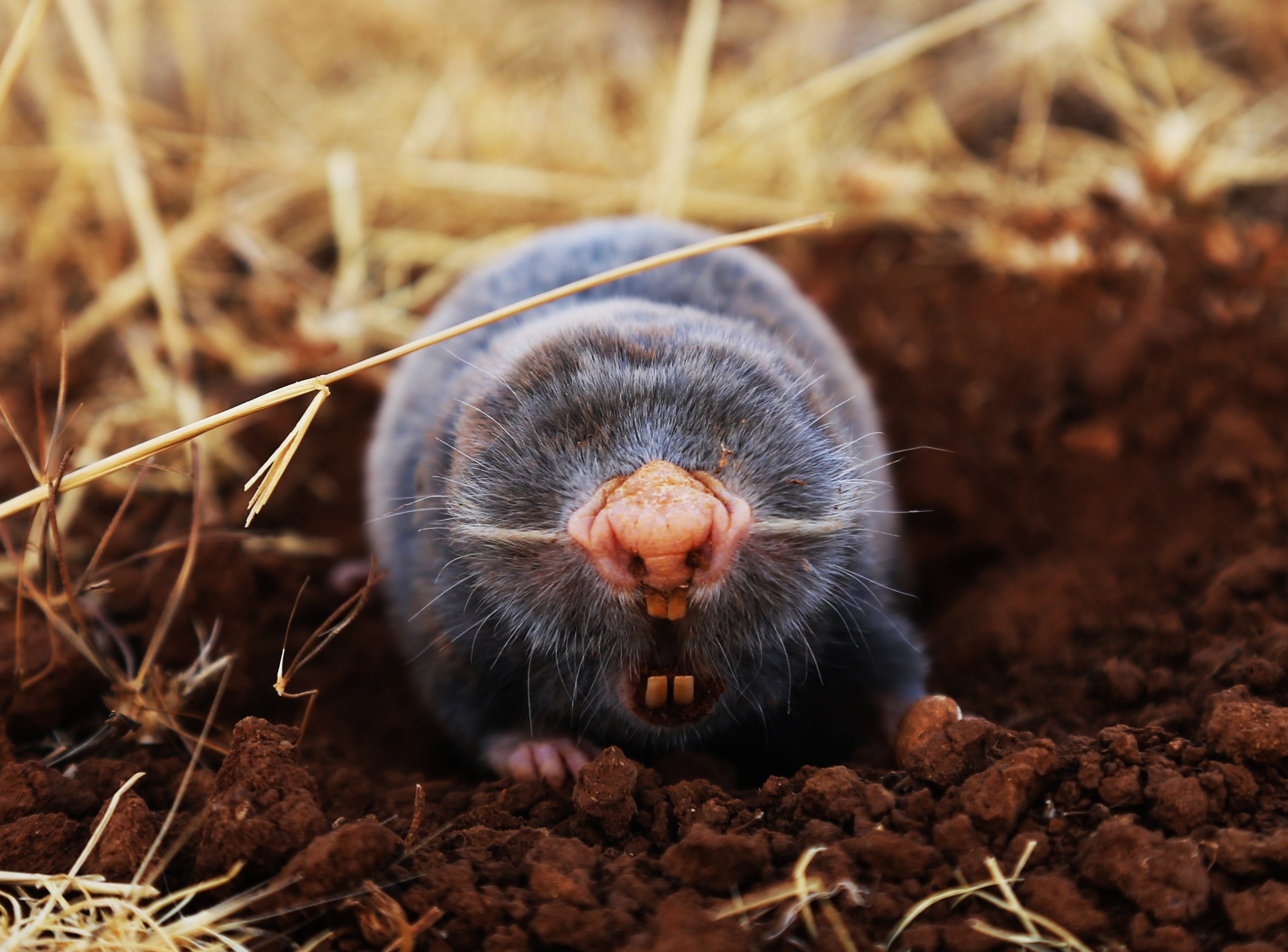Taken from the RSPCA Website on Moles.
LIVING WITH... MOLES
The European mole is one of Britain’s most elusive mammals. Rarely seen, they spend most of their life underground, leaving only ‘molehills’ as a sign of their presence. Moles live on average two to three years but have been known to live up to six. Deaths are caused mainly by persecution from humans, although cats, dogs, stoats and predatory birds will take moles when above ground and some are killed by traffic. Typically between 13 and 16 cm in length, moles have short black-brown fur; large, clawed ‘spade-like’ front feet; a long, pointed, fleshy nose and very small eyes. Mainly insectivores (‘insect eaters’) and active during day and night, moles will prey on a range of invertebrates and may take mice and shrews. The most important part of their diet is earthworms; an average mole will eat 60% of their bodyweight in earthworms every day Earthworms are such an important part of the mole’s diet that they store them in larders; special chambers where up to 370 worms have been found! The worms are immobilised with a bite to the back of the head so they remain fresh. Moles spend their lives in extensive underground tunnel systems, often very deep. Where they live mainly depends on where food can be found. Moles are common in grassland, mixed or deciduous woodland, arable fields and gardens (even urban gardens). Moles will build both permanent and temporary tunnels in different circumstances. Permanent tunnels can be used by many generations of mole, are built deep underground and can stretch for hundreds of metres. Temporary tunnels are generally short-lived and found where their prey is concentrated near the surface. Moles are both territorial and solitary, except during the mating season in spring, when males will extend their tunnel systems in the search for females. A female mole will give birth to between three to four pups; these will stay with her for around five to six weeks before leaving to start their own independent lives. Moles, or rather their tunnels and molehills, are sometimes considered a pest in the UK. Despite this reputation, moles do contribute to the quality and fertility of the soil by enabling the mixing of oxygen and water (‘aeration’). They also prey on various insects harmful to agriculture and can contribute to pesticide-free farming. Moles have been killed in large numbers for many years.
Are moles blind?
Contrary to popular opinion moles are not blind, but they do have relatively poor vision. Their eyes, typically only 1mm in diameter, demonstrate how the mole has evolved to suit its subterranean existence. They are sensitive to changes in light levels and can detect when predators have broken into their tunnel systems. Moles rely greatly on their acute sense of smell when burrowing to detect prey, other moles or water sources.
Are mole traps humane?
Guidelines published by the Universities Federation for Animal Welfare (UFAW) lays out and assess in detail the pros and cons of live versus lethal traps. The RSPCA has also researched into humane mole control. Although the use of live catch traps may appeal to those wishing to avoid killing, there is no scientific data to indicate they are humane. Research has concluded that ‘tube traps’, a commonly sold form of mole trap, should actually be taken off the market as they severely compromise welfare. All live catch traps can have significantly negative effect on the animal’s welfare; being confined in a live catch trap can cause an enormous amount of distress to the animal involved and it is not unusual for the animal to have died by the time the trap is checked. Moles are also territorial and so introducing one that has been captured to a new area is fraught with problems; Natural England also advise against the relocation of moles of welfare grounds. High quality, conventional scissors traps are commonly used but the RSPCA does not recommend the use of such traps as there is a risk the trap will not kill the mole outright and may cause prolonged suffering. Under the Spring Traps (Approval) Order 2012, anyone using traps must take precautions in preventing the traps causing injury or death to any species other than the one it was intended for.
<a href="https://www.uksmallbusinessdirectory.co.uk/">UK Business Directory</a>

